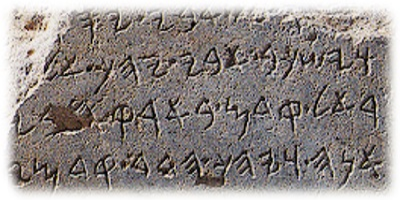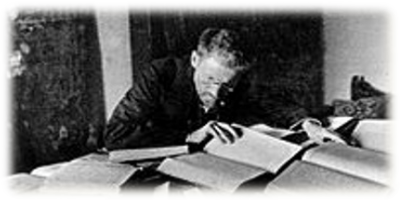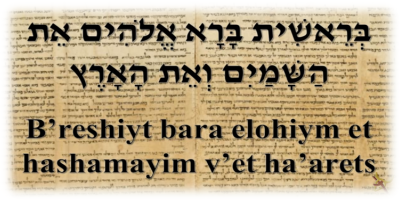From the Creation to the Flood
Hebrew is classified as a Semitic (or Shemitic, from Shem, the son of Noah) language. Was Hebrew just one of the many Semitic languages such as Canaanite, Aramaic, Phoenician, Akkadian, etc., that evolved out of a more ancient unknown language? Or, was Hebrew, and the Semitic family of languages, the original language of man?
According to the Bible all people spoke one language (Genesis 11:1) until the construction of the Tower of Babel, in southern Mesopotamia which occurred sometime around 4000 BC (Merrill F. Unger, "Tower of Babel," Unger's Bible Dictionary, 1977 ed.: 115). During the construction of the Tower, God confused the language of man and scattered the nations (Genesis 11:7,8).
It is at this time that the Sumerians (from the land of Sumer, known as Shinar in the Bible - Genesis 10:10), speaking a non-Semitic language, appear in southern Mesopotamia (J.I. Packer, Merril C. Tenney, William White, Jr., Nelson's Illustrated Encyclopedia of Bible Facts (Nashville: Thomas Nelson, 1995) 337.). It is believed that the Sumerians are related to the people living between the Black and Caspian Seas (Madelene S. Miller and J. Lane Miller, "Sumer," Harper's Bible Dictionary, 1973 ed.: 710) known as the Scythians, descendents of Noah's son Japheth (Merrill F. Unger, "Scythian," Unger's Bible Dictionary, 1977 ed.: 987).
At approximately the same time the Sumerians appeared in Mesopotamia, another civilization emerges in the South, the Egyptians. The original language of the Egyptians is Hamitic (From Ham, the second son of Noah) and is also unrelated to the Semitic languages (Merrill F. Unger, " Egypt," Unger's Bible Dictionary, 1977 ed.: 288).
During the time of the Sumerians and the Egyptians, the Semitic peoples lived in Sumeria and traveled west into the land of Canaan.
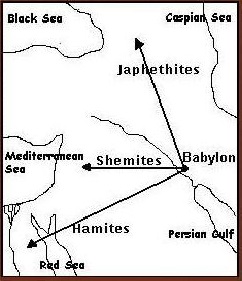 |
It would appear that after the Tower of Babel, the descendants of Japheth traveled north with their language, the descendants of Ham traveled southwest with their language and the Semites traveled west with their language.
"That is why it was called Babel - because there the LORD confused the language of the whole world. From there the LORD scattered them over the face of the whole earth" (Genesis 11.9).
What was the one language spoken prior to the Tower of Babel? When God created Adam, he spoke to him (Genesis 2:16) indicating that God gave Adam a language and this language came from God himself, not through the evolution of grunts and groans of cave men. When we look at all the names of Adam's descendent, we find that all the names from Adam to Noah and his children are Hebrew names, meaning that their name has a meaning in Hebrew. For instance, Methuselah (Genesis 5:21) is Hebrew for "his death brings" (The flood occurred the year that he died). It is not until we come to Noah's grandchildren that we find names that are of a language other than Hebrew. For instance, the name Nimrod (Genesis 11:18), who was from Babylon/Sumer/Shinar and possibly the Tower of Babel, is a non-Hebrew name. According to the Biblical record of names, Adam and his descendants spoke Hebrew.
In addition, Jewish tradition as well as some Christian Scholars, believed that Hebrew was the original language of man (William Smith, "Hebrew Language," Smith's Bible Dictionary, 1948 ed.: 238).
From the Flood to the Babylonian Captivity
The first mention of a Hebrew is in Genesis 14:13 where Abraham is identified as a "Hebrew" (Eevriy in Hebrew). In Exodus 2:6 Moses is identified as one of the "Hebrews" (Eevriym in Hebrew) and throughout the Hebrew Bible the children of Israel are often identified as "Hebrews." A "Hebrew" is anyone who is descended from "Eber" (Ever in Hebrew), an ancestor of Abraham and Moses (See Genesis 10:24).
The language used by the descendants of "Eber" is called "Hebrew" (Eevriyt in Hebrew), but is never called "Hebrew" in the Hebrew Bible, but is instead referred to as the "Language of Canaan" (Isaiah 19:18) and the "Language of Judah" (II Kings 18:28, Isaiah 36:11, 13, Nehemiah 13:24, II Chronicles 32:18). While the Hebrew Bible may not refer to the language of the Hebrews as "Hebrew," we do know that their language was in fact "Hebrew," as attested to in the many inscriptions discovered in the land of Israel from this period of time.
From the Babylonian Captivity to the Bar Kockba Revolt
After the time of King David, the nation of Israel split into two kingdoms, Israel in the north and Judah in the south. The northern Kingdom of Israel was taken into captivity by the Assyrians around 740 BC and the southern Kingdom of Judah was taken into Babylonian captivity about 570 BC.
During their captivity in Babylon, the Hebrews continued to speak the Hebrew language, but instead of writing the language with the Hebrew script (often referred to as Paleo-Hebrew), they adopted the Aramaic square script to write the Hebrew language and the Hebrew script was used on a very limited basis such as a few Biblical scrolls and coins.
When the Hebrews returned to the land of Israel, around 500 BC, it was believed that the Hebrews had abandoned the Hebrew language and instead spoke the Aramaic language, the language of their captors in Babylon. The Oxford Dictionary of the Christian Church, in its first edition in 1958, stated; "[Hebrew] ceased to be a spoken language around the fourth century B.C." However, much textual and archeological evidence has been discovered over recent years, which has revised this long-established theory.
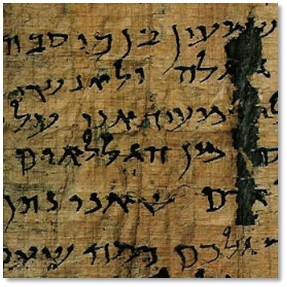
Bar Kochba letter from 135 A.D.
One of the most compelling evidences for the continued use of Hebrew into the 2nd Century A.D. is a letter from the Jewish General Simon Bar Kockba (Shimon ben Kosva, as the first line of the letter states in the above picture), which is dated at 135 A.D., which he wrote during the second Jewish revolt against Rome. This letter, along with many others, was written in Hebrew, establishing the fact that Hebrew was still the language of the Jewish people, even into the second century AD.
Because of the overwhelming evidence of Hebrews continued use, the Oxford Dictionary of the Christian Church, in its third edition in 1997 now, states; "[Hebrew] continued to be used as a spoken and written language in the New Testament period."
From the Bar Kockba Revolt to Today
When the Jews, led by Simon Bar Kockba, were defeated in the revolt of 135 AD the Jews were expulsed from the land and dispersed around the world initiating the Diaspora. At this point most Jews adopted the language of the country they resided in, but Hebrew continued to be spoken in the synagogues and Yeshivas (religious schools) for the teaching and studying of the Torah and the Talmud.
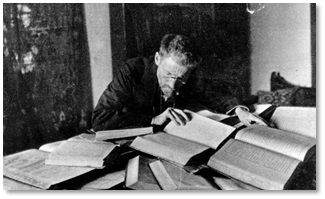
Eliezer Ben-Yehuda, c. 1912
In the late 19th Century Eliezer Ben-Yehuda began a revival of the Hebrew language as a living language for the Jewish people in Israel and when the state of Israel was established as an independent nation in 1948, Hebrew became the official language and, once again, Hebrew became the native language of the Hebrew people.

Like what you’re discovering? Continue the journey from Bible reader to translator.
|



